
Verdict
The Xbox Series X doesn’t win on exclusive games, but when it comes to features it is an amazing bit of kit, with highlights including Quick Resume, Smart Delivery and Xbox Game Pass. However, it is in danger of falling behind with both slimmer and more powerful versions of the PS5 now available and no sign of a boosted Series X to compete.
Pros
- Sleek and premium design
- Xbox Game Pass offers a stunning level of value
- Quick Resume is a game changer
- SSD makes games and applications faster than ever
Cons
- User interface and overall design is very familiar
- Not as many high-quality exclusives as PS5 and Switch
-
4K support:The Xbox Series X is able to play games at up to a 4K resolution, providing more detailed pictures than a Series S. -
Ray tracing: Ray tracing allows for more realistic lighting and shadow effects, but does impact performance when activated. -
Super-speedy SSD:With a blazing fast SSD, games can load up instantly, while Quick Resume allows you to switch between games and continue progress without saving.
Introduction
The Xbox Series X is one of the fastest game consoles that you can currently buy, offering 4K graphics and a turbocharged SSD.
However, it has fierce competition not only in the form of the PS5 but newer PS5 Slim and PS5 Pro consoles that offer a slimmer build and even more powerful graphics performance respectively. Sony also has a greater selection of high-quality first-party games than Microsoft despite the release of first-party titles like Starfield and Microsoft Flight Simulator.
That’s not to say there aren’t plenty of reasons to buy the flagship Xbox, however, with features like Game Pass, Quick Resume and Smart Delivery all proving to be fantastic additions.
After spending over four years with the Xbox Series, here are my thoughts on whether it’s still worth a purchase in 2024.
Design
- Feels like a natural successor to the previous generation
- Controller and colour scheme remain very similar
- The console weighs in at 4.46kg
Microsoft has abandoned previous design conventions with the Xbox Series X, opting for something more akin to an office desktop PC than a traditional gaming console. It’s a brave departure, and one of which I’m definitely a fan.
At first glance, it may appear needlessly bulky, but it has slotted under my desk, alongside my existing TV setup with ease, the sharp corners and distinct profile making it an ideal fit.
Nobody is going to call the Series X a looker; at launch, it was compared to a fridge so many times that Microsoft ended up actually making one. But it isn’t screaming for attention like the PS5, which has largely kept the same design language with the new PS5 Slim and PS5 Pro, and I like it that way. One in-your-face games console is more than enough.

Measuring 301 x 151 x 151mm and weighing 4.46kg, the Series X has a noticeable heft, but one that also exudes a degree of premium quality you’ll see in only top-quality electronics. You may or may not appreciate the design, but you certainly wouldn’t be able to deny the craftsmanship. Taking certain aspects of the Xbox One X blueprint, Microsoft expands upon them here, maintaining visual motifs that set it apart from the less powerful Series S.
The power button sits isolated in the left-hand corner, while the eject and sync buttons are seen alongside the disc drive and a single USB 3.1 port on the opposite side. Once again, it’s a minimal yet impactful approach that Microsoft is aiming for, and every facet of the Series X oozes this sense of style. The remaining sides are left completely blank, with the exception of four small nubs that cushion the console if it’s positioned on its side. Be warned, it’s also a fingerprint magnet.
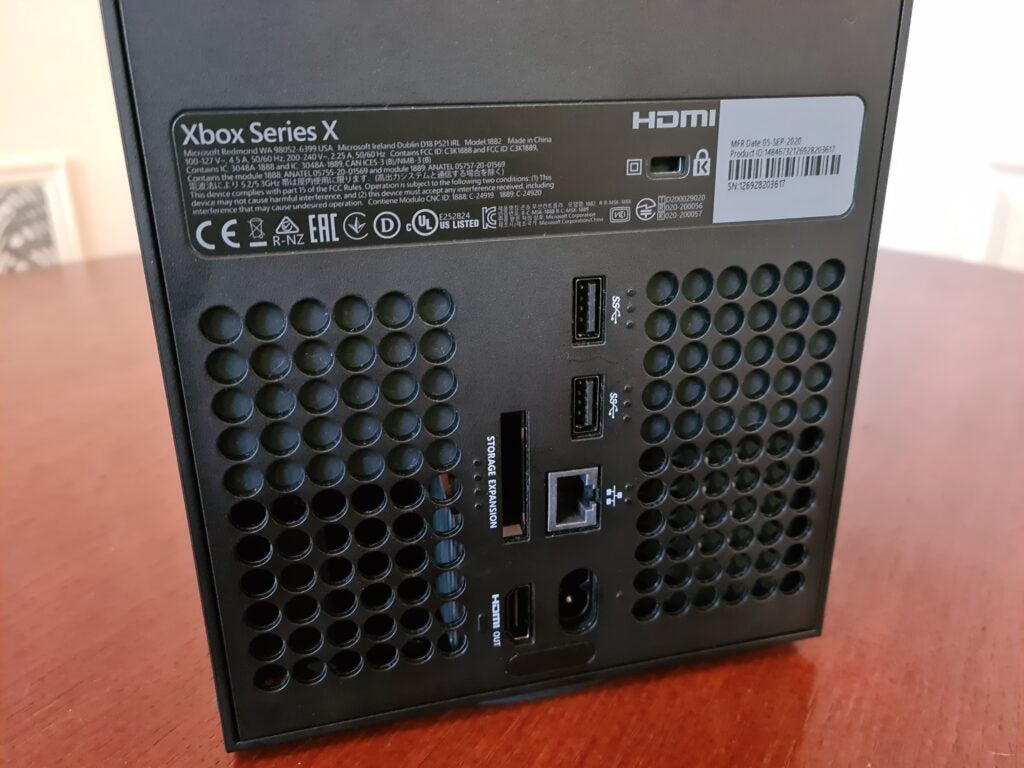

Be mindful of ventilation though; the fan resides on the top of the unit, indicating that a horizontal position is arguably the Series X’s ideal. On the rear of the unit you’ll find the console’s ports along the lower half, with the number reduced somewhat next to the Xbox One family of machines. Inputs include an HDMI 2.1 port, 2 USB 3.1 ports, an Ethernet port and a storage expansion slot.
Memory expansion is handled by bespoke SSD drives produced by Microsoft in partnership with Seagate. You’ll require a specific drive speed to handle titles that are optimised for Series X. They’re expensive, but the insertion and removal of such devices is no harder than plugging in a PS2 memory card back in the day. It’s far easier to expand your Series X storage than doing the same for the PS5, for which you’ll need a screwdriver and the confidence to rip the thing apart.
The controller is a small yet worthwhile improvement over the Xbox One peripheral. It feels more comfortable to hold thanks to a textured grip across the back and along the triggers. A share button has also been introduced, making the act of capturing your epic gamer moments far more simple. Those who use rechargeable battery packs will require a USB-C cable, which is now the standard input for the controller. Unfortunately, one isn’t included in the box.
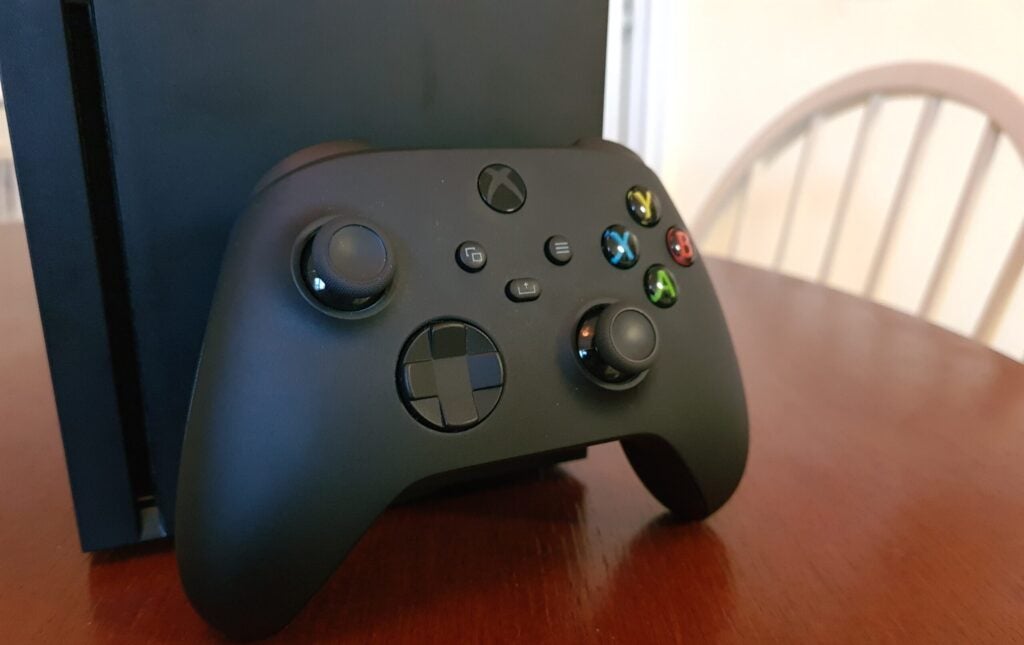

Dolby Atmos and HDR are fully supported on Xbox Series X, receiving solid implementation in the majority of enhanced games I’ve tested and looking positively gorgeous on my Sony X900H LED. Automatic HDR has also been incorporated into backwards compatibility, applying the feature to titles which were never intended to support it.
The results can be mixed, but are ultimately impressive given it can be spread across three generations of hardware. More vibrant colours, realistic lighting and a sharper image overall across the majority of my library is a lovely little bonus, and will likely only improve as Microsoft hones it further in future updates. On my display I had to disable Dolby Vision when switching to a 120fps output, which is a worthwhile compromise given the performance gain.
So, what about the omissions? The infrared blaster and HDMI passthrough have been abandoned, largely because this is now a dedicated games console, rather than an “all-in-one media station”, like the vanilla Xbox One. I have welcomed the flat, angular design of the Xbox Series X, which has made inserting cables from behind a relative breeze; rather than having to fiddle hopelessly in the dark or having to lift the heavy unit out of its resting place.
Overall, the design of the Xbox Series X is likely to be polarising, especially for those who are used to more traditional consoles. To me, it’s clear that Microsoft is following a roadmap with this design, building creatively on what came before it to ensure the Series X is seen as its most powerful console yet. The monolithic nature of its design is purposefully impactful, making it the ideal older sibling to the comparably dinky Xbox Series S.
Specs and technology
- Features an AMD Zen 2 CPU and 12 teraflops of computing power
- NVMe SSD allows for fast loading times and Quick Resume
- Capable of 120fps and 4K gaming performance with the right display
The Xbox Series X is the most powerful console Microsoft has ever made, both in terms of its specifications and the tech being employed to push games from the past, present and future to new limits. The best Xbox titles look fantastic, and the console’s genius backwards compatibility tech can transform gaming experiences that once felt clunky and archaic into something that feels futuristic.
First, let’s start with the foundations. The Xbox Series X is powered by a custom AMD Zen 2 CPU with eight individual cores running at 3.8GHz, one of which is dedicated entirely to operating system and user interface functions. While its layout remains largely unchanged, syphoning off such concrete resources to the UI results in unfound levels of fluidity. Even with ample amounts of power, at times the Xbox One X continued to struggle with system navigation; conversely, the Series X decimates obstacles without hesitation.
As for the GPU, Microsoft once again teams up with AMD, with RDNA 2 architecture being implemented into the graphics processor. Boasting an impressive 56 compute units with 3,584 cores, it’s capable of pushing select games up to a 4K at 120fps performance, which is impressive even when compared to the latest PC gaming hardware.
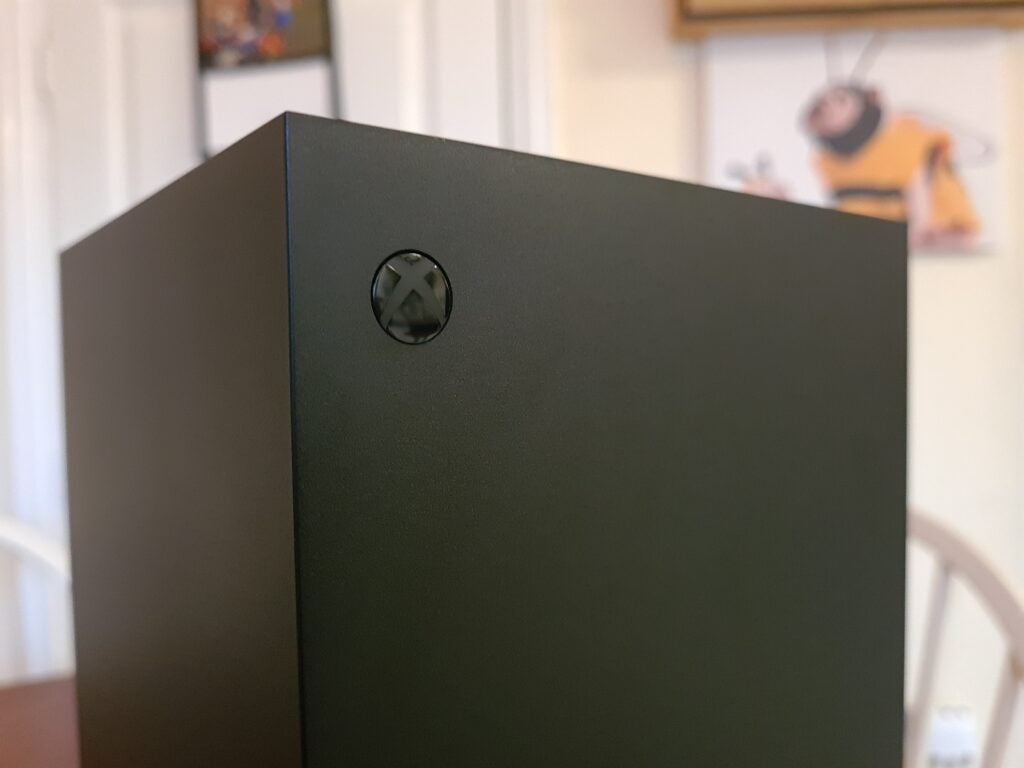

The Xbox Series X is in possession of HDMI 2.1 port – which, technically, makes 8K output possible. However, you’ll likely only see 8K resolutions for media playback on streaming services such as Netflix and Disney Plus once support surfaces. You’ll also need a top-end telly or monitor to actually see the improvements.
You’re probably sick of hearing about teraflops as a nonsensical buzzword for the most powerful consoles on the market, so I’m delighted to report that Xbox Series X has 12.15 of the suckers. That’s roughly four times more than the Xbox One X. Given that the aforementioned console is still capable of pushing modern blockbusters to native 4K with a decent level of performance, this is a frankly astounding specification.


Alongside the almighty teraflops you’ll find 16GB of GDDR6 memory, 10GB of which is being prioritised for games themselves. The remaining 6GB aims to focus on computing functions, like the user interface. In the future, it is likely that talented developers will be able to focus resource management to really help this console
This is a machine that can play hundreds of games spread across the original Xbox, Xbox 360 and Xbox One, providing automatic performance and visual improvements to the majority of them. Several years into this console generation, I still get a thrill from downloading an old 360-era favourite and seeing it run as smooth as butter.
Performance
- Currently has few flagship exclusives to showcase the console
- Loading times on multiplatform titles outperform the PS5
- Quick Resume is a brilliant feature, allowing instant switching between games
To test graphics and performance on Xbox Series X, I played a selection of games through native backwards compatibility and those with specific optimisations for the platform. Following the installation of an update, I’ve yet to find a game outside of those that support Kinect, which won’t play nicely with the Series X. It’s simply a case of inserting a disc or installing the application from your digital library before diving right in.
The seamless nature of maintaining your existing console experience, but with so many quality-of-life improvements, is incredibly welcome – and this is evident in the loading times of every game we tested. Whether or not it has received a bespoke update to support the console, the Xbox Series X is capable of decreasing the time it takes to jump into games significantly, while simultaneously pushing resolution and performance. For context, the below metrics refer to loading from the title screen directly into gameplay.
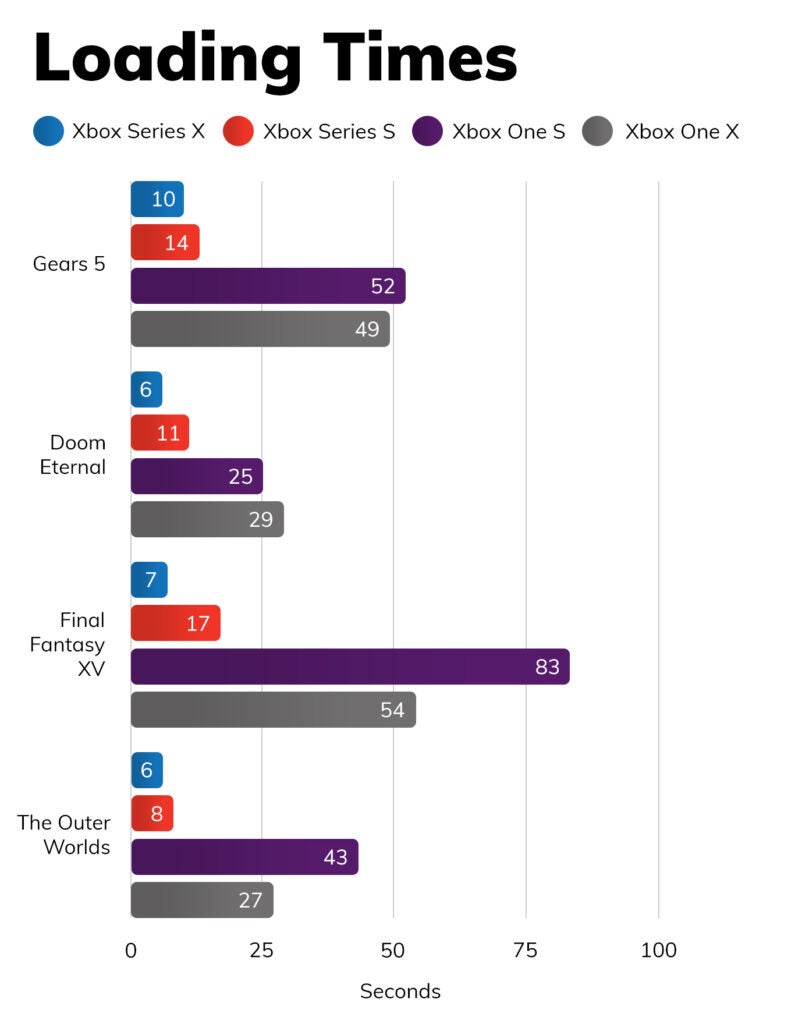

Backwards compatibility does have its disadvantages, however. If, in the past, a title hadn’t received an update to enable support for the Xbox One X, it can look particularly rough visually. While it’s smooth and satisfying to play, Watch Dogs 2 is a mess of aliasing artefacts and poor draw distances, since it’s working from the technological compromises applied by the original Xbox One hardware.
Similar complaints can be levelled at games such as Alien Isolation and Wolfenstein: The New Order, which doesn’t reap all of the benefits of Series X simply as a result of their original state. This isn’t a deal-breaker, but something worth taking into account for those who plan to dig deep into their existing libraries. Those titles with dedicated updates are a different story entirely, with Final Fantasy XV being given a second lease of life with dramatically enhanced loading times and performance that’s now locked at 60fps.
It’s a similar story with Monster Hunter World and NieR: Automata, which show that previous generation titles with unlocked frame rates are now able to go much further without making the Series X break a sweat. Games with locked frame rates can’t be changed on Series X, so it’s only possible to benefit from backwards compatibility to a degree before you hit a wall. Nevertheless, having access to so many games at your fingertips is a net positive, even if they could be pushed further with a bit of tinkering.


Exactly what the word “optimised” means will vary depending on the title, but you can usually expect improved performance, visual fidelity and graphical features such as ray tracing and 120fps performance that simply weren’t possible on the previous generation of consoles.
Gears 5 is easily the most impressive example, taking a third-person shooter that already ran beautifully on Xbox One X and enhancing it even further.


The Coalition has put its own personal touch into a new update that builds on the visual fidelity with increased detail across its characters and environments. Series X also allowed the studio to decrease latency in controls, resulting in a far smoother experience overall when actively reloading amidst hordes of locusts. The big takeaway is 120fps multiplayer for those with compatible displays, doubling the smoothness of the action in a very significant way.
Another flagship title is Yakuza: Like a Dragon, a series that’s been a PlayStation mainstay since its inception – but it’s now hopped into Microsoft’s open arms too. The eccentric RPG can be played in two modes, one that prioritises performance, and another that amps up the visuals to unprecedented levels.
Given its status as a turn-based RPG, the majority of my playthrough was spent at 4K/30fps, happy with the lower level of performance so the luscious cities of Yokohama and Kamurocho could really shine. But if you’d rather play at 60fps at 1440p, the option is there, and it marks the first time the engine has achieved such a benchmark on console.
The reflections of streetlights in shallow puddles possess a luminescence on Series X that’s lacking in older consoles, while the increased resolution allows characters and buildings to pop with flair. Aliasing and jagged edges are vastly reduced on both modes, showing that serious effort has gone into making Yakuza shine.
Software
- Home screen is the same as previous Xbox
- Microsoft is working on an upgrade
- Lags behind PS5 in terms of navigation speed
The user interface for Xbox Series X is virtually identical to the previous generation, although the power of the console allows for everything to feel far more cohesive and satisfying during moment-to-moment navigation. You can transition between menus and applications within seconds, instead of having to wait for assets to load on Xbox One. It’s such a stark difference, and I found it hard to go back when revisiting older hardware.
Microsoft still favours a tile-based dashboard, with your open and most recently played games sitting in the top row. It’s by no means a bad interface, but it’s pretty cluttered, and whether you like it or not there will always be a few adverts displayed on the home screen.
You can change the background to either a static or dynamic theme, but the abundance of tiles means it’s always going to be at least partly obstructed, and I do wish for the more minimalist redesign Microsoft has reportedly been working on for some time. Still, it’s easy to hop into the Game Pass section of the dashboard, and that’s where I’d imagine most people will be spending most of their time browsing.
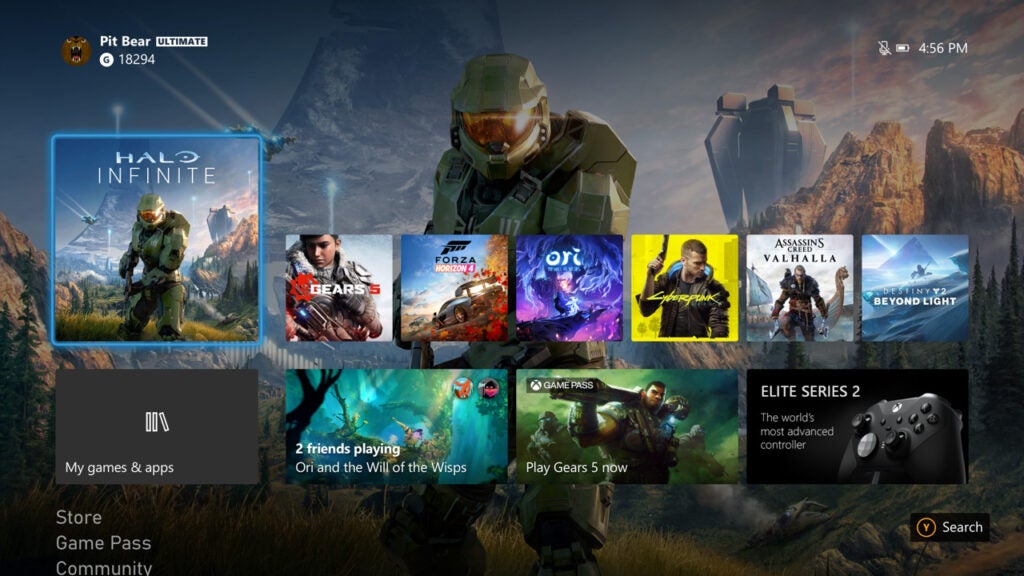

Sharing screenshots and videos has been a part of the Xbox ecosystem for several years now, and the new controller allows you to capture them with a touch of a button. It’s seamless, and everything you take will be automatically uploaded to Xbox Live for saving and sharing after the fact. Or, you can do it directly from your console.
There are still a few more hoops to jump through before sharing a screenshot than I’d like, and the experience lags behind the PS5 in terms of overall speed – but it’s a far cry from what came before it.
Accessing your games, engaging with online communities and even swapping games between different drives is a breeze, demonstrating the impact of the SSD. Quick Resume is a revolutionary new feature that’s changed how I approach gaming on Xbox platforms.


It lets you seamlessly switch between a maximum of six games almost instantly, dropping you directly into the action without having to load progress or wait for an onslaught of logos to pass by. I was shocked by the fluidity of this feature, branding it as witchcraft after Quick Resume was able to recall the states for several games after having been unplugged overnight.
The SSD is caching instances of each game into its storage, which the Series X is able to switch between in an instant. There’s no negative impact on performance or visuals as a result; you’re simply returning to a game as if it’s been freshly booted. Certain titles that rely on a constant internet connection don’t support the feature right now, which is understandable, but the fact that the majority of experiences both old and new support this feature out of the box is staggering.
Xbox Series X also comes with a 4K Blu-ray player, which is far more capable than what was packaged with the One X and One S. Testing a film that supports both 4K and HDR, the experience was smooth, responsive and the image on-screen looked positively gorgeous.
Game library
- Slim number of high-quality exclusives
- Game Pass subscription is an absolute bargain
When it comes to the Xbox Series X and games, it’s all about Game Pass. Microsoft’s subscription service remains the best in gaming by some distance, even if there haven’t been too many new first-party titles to download or stream in the last 18 months or so.
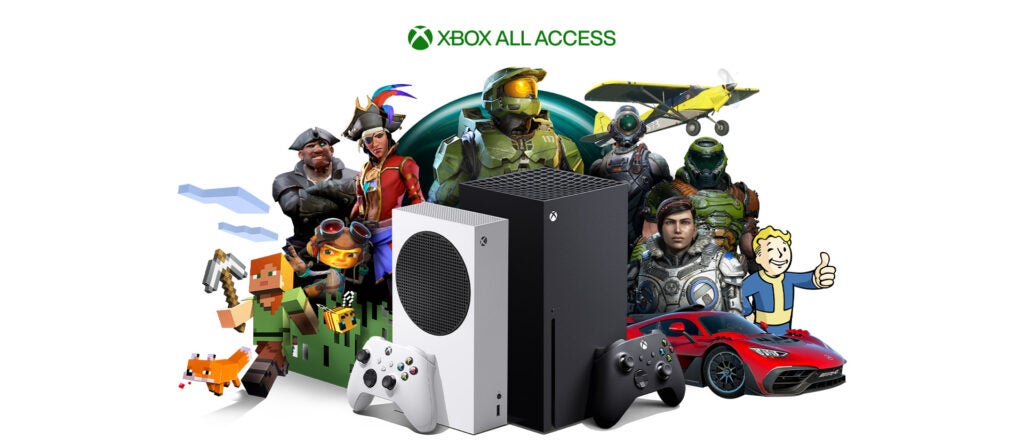

With a top-tier Game Pass Ultimate plan (£12.99/$16.99 a month) you have access to over 100 rotating games. Any Microsoft-published game (including Bethesda titles) launches on Game Pass day one and stays there, which is not a benefit Sony currently offers on any of its PS Plus tiers. Game Pass Ultimate also rolls in an EA Play membership, which includes a collection of EA’s most popular titles, and often time-limited trials for new games.
While all of the above undeniably makes for a very good deal, I must point out that first-party Xbox games haven’t exactly been coming in thick and fast recently. Starfield was one of the only standout games of 2023 finally arrived, and while it’s a solid offering, isn’t able to bridge the gap with PlayStation with its offerings of Marvel’s Spider-Man 2, God of War Ragnarok, and Horizon Forbidden West.


Still, Game Pass has never just been about first-party games. Microsoft still regularly lands deals with indie publishers and AAA big hitters alike, while you could probably spend an entire year playing through the fantastic Persona series alone, which is now available on Game Pass.
The future of the service is unclear, but right now, no Xbox Series X owner should be without it. And if you’re playing catchup on the last few years, you have a veritable digital goldmine of Halo Infinite, Psychonauts 2, Forza Horizon 5 and Sea of Thieves sitting there waiting for you.
Latest deals
Should you buy it?
You want the most powerful Xbox ever
The Xbox Series X crushes all Xbox consoles before it in terms of raw power, and is technically superior to the base PS5, even if this isn’t necessarily always reflected by the performance of third-party titles.
You don’t need the flagship Xbox experience
The Xbox Series X isn’t the only Xbox in town these days. For considerably less cash you can pick up the Xbox Series S, which lacks true 4K performance and the ability to play physical games, but still supports features like Quick Resume and Smart Delivery.
Final Thoughts
The Xbox Series X offers plenty of major upgrades on its predecessor, including 4K graphics with support for ray tracing, super-speedy SSDs to pace through loading screens and features like Quick Resume that allow you to boot up a game right where you left it.
But if I’m completely honest, the new-gen experience we were promised by both Microsoft and Sony hasn’t quite materialised yet. We’re yet to see the hardware pushed to its limit, with Microsoft’s insistence on supporting previous hardware arguably holding back its potential. And while Microsoft has made steps to improve the first-party catalogue with major acquisitions, that’s yet to bear much fruit – the PS5 still leads that contest.
Game Pass is probably still the most appealing aspect of the Xbox platform, and I’ve never even considered cancelling it. But Microsoft still has some way to go to entice players over from the PS5 ecosystem.
How we test
In order to test the Xbox Series X, we played a number of games and compared its performance to rival consoles such as the PS5.
We’ve also made sure to check the latest firmware updates and design alterations to make sure this review is up-to-date for modern-day buyers.
Tested multipled games to gauge performance.
Compared performance to the PS5 and Xbox Series S.
FAQs
The Xbox Series X is technically capable of 8K output, but that doesn’t mean you’ll be playing the next Forza game in 8K. With so little 8K content and so few 8K TV owners out there, the functionality has not yet been unlocked on the Series X. Game developers, meanwhile, are still concentrating on 4K gaming and I don’t see that changing any time soon, especially given how difficult it is proving to be for the current consoles to even maintain native 4K visuals alongside high frame rates.
Yes. Microsoft has put a huge amount of effort into ensuring that the bulk of the Xbox One, Xbox 360 and original Xbox libraries are compatible with the Xbox Series X and S. Not every game will work on the console, but the vast majority do, and most of the time they automatically look and run better than they ever did on the older hardware.
Game Pass Ultimate isn’t exactly cheap, but this gives you access to more than 100 games, either on the console itself or over the cloud on a supported streaming device such as your smartphone or the Steam Deck. Every game Microsoft publishes is available to download on Game Pass from day one, and will stay there, which was the company’s big promise at the beginning of this generation. The downside is that third-party games are eventually removed from the service, so if you’re halfway through something that suddenly leaves Game Pass, you’ll need to purchase it from the Microsoft Store to continue playing.
Like the PS5, the Xbox Series X is very expensive and is rarely significantly discounted. Most of the console’s games are also playable on the older Xbox One, and so far we haven’t had many Series X experiences that feel truly next-gen. The console promises 4K/60fps gaming, but if you want to enjoy advanced lighting features such as ray tracing, you’ll rarely be able to do so without sacrificing performance.
UK RRP
USA RRP
AUD RRP
Manufacturer
ASIN
Release Date
›
Jargon buster
GPU
The graphics processing unit is designed to render graphics, which is particularly important for gaming, creating 3D models and editing video.
SSD
Known as Solid State Drive, this is a faster form of a memory than a standard hard drive. Results in faster loading times and more ambitious games.



